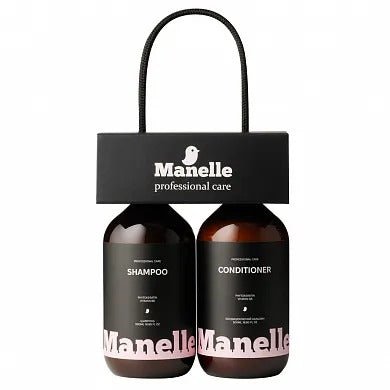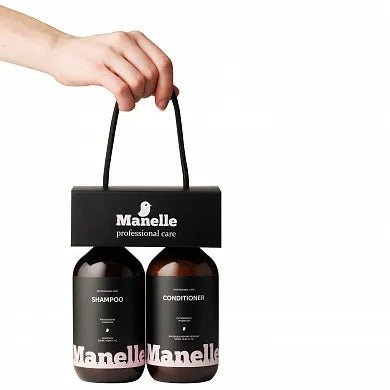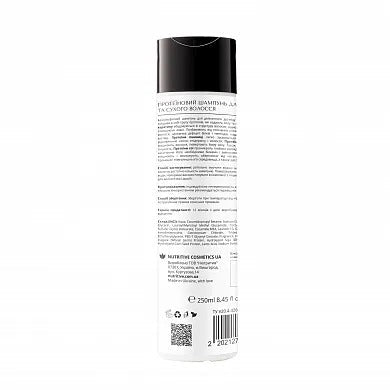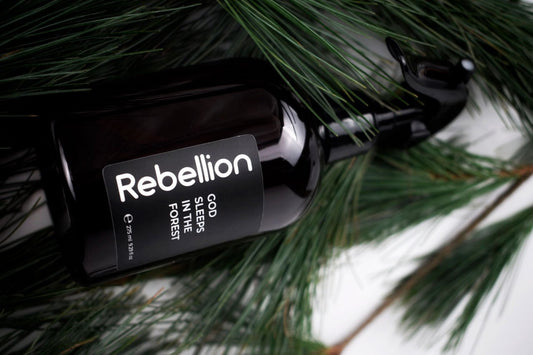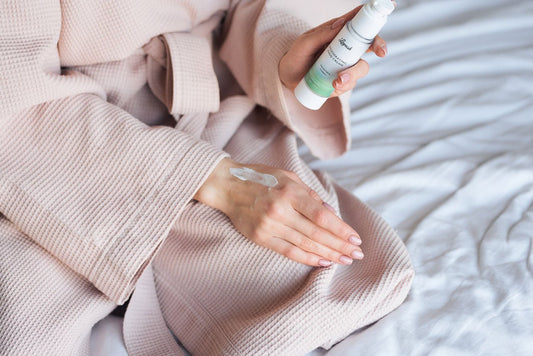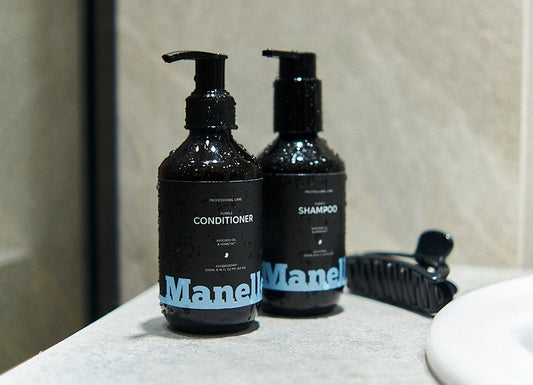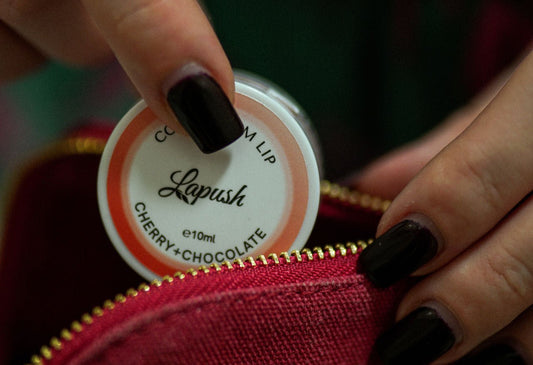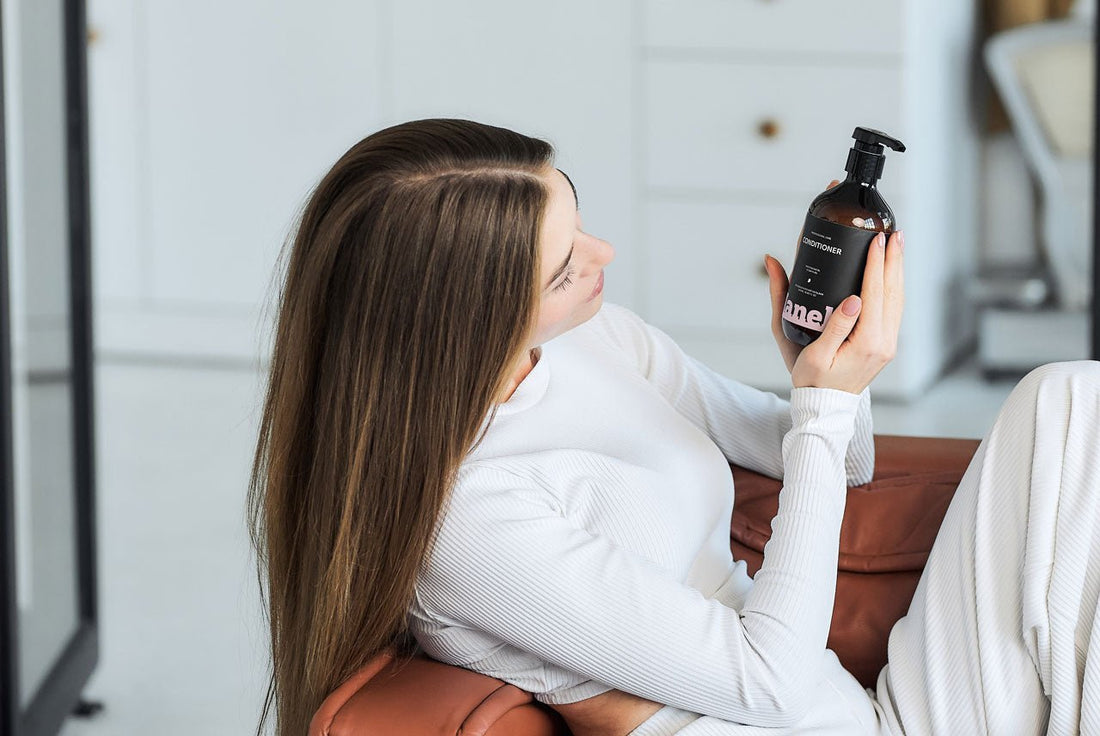
Shampoo and conditioner for different hair types: how to choose the perfect care
The right choice of shampoo and conditioner is the basis of healthy and beautiful hair. Each hair type requires an individual approach and specially developed formulas that provide optimal care. In the world of modern cosmetology, there are many options, but how to find the perfect pair that suits you? Our expert guide will help you understand the features of caring for different hair types and choose cosmetics that will provide professional results at home.
Functions of shampoo and conditioner: fundamental differences
Many people believe that shampoo and conditioner can be used as needed or can be used alone. But in fact, these products perform fundamentally different functions, and it is their combination that provides complete care. Shampoo is a cleansing agent intended primarily for the scalp. It removes sebum residues, dust, styling products and pollution that accumulate during the day. Modern shampoos have different intensities of action: from deep cleansing to mild care without sulfates, so it is important to choose a product according to individual needs.
Conditioner performs the function of post-wash care - it does not cleanse, but creates a protective barrier on the surface of the hair, smoothes the cuticle and helps retain moisture. After shampooing, the hair cuticle opens, and it is the conditioner that helps to close it, maintaining the internal balance. This provides smoothness, elasticity and shine. Conditioners contain nutrients, moisturizers, proteins and silicones that help strengthen hair, make it easier to comb and reduce breakage.
Proper use of shampoo or conditioner and long-term effect
Ignoring one of the products disrupts the balance of care. If you use only shampoo, your hair can become stiff, dry, tangled or dull, especially if you regularly use a hairdryer or dye it. In turn, conditioner without prior cleaning will not have a full effect, since nutrients will not be able to penetrate the layer of dirt. It is also important to use these products correctly: shampoo is applied mainly to the roots and scalp, and conditioner - only along the length and ends, to avoid excessive stress on the root zone.
Regular use of shampoo and conditioner, selected for your hair type, forms a stable and healthy care base. This approach not only improves the appearance of the hairstyle, but also strengthens the hair structure from the inside, preventing split ends and brittleness. For maximum results, it is recommended to choose products from the same line or brand, as their formulas complement each other and provide a synergistic effect.

How to determine your hair type to choose shampoo and conditioner
Determining your hair type is the first step to creating an effective hair care program. Key characteristics include the level of oiliness of the scalp, the thickness of the hair shaft, and the degree of damage. Additional factors include hair porosity, elasticity, and reaction to various hair products. Oily hair quickly loses volume and looks unkempt the day after washing, while dry hair is often brittle and has a dull shine.
Normal hair type stays fresh for 2-3 days after washing and has a natural shine without additional products. Combination hair type is characterized by oily roots and dry ends, which requires a special approach to the choice of products and their application technique. Damaged hair can be the result of chemical treatments, frequent use of heat tools or aggressive styling products.
Hair texture also influences product selection: fine hair needs lightweight formulas that don’t weigh it down, while thick and coarse hair responds better to nourishing and moisturizing products. Curly hair has a special structure that is prone to dryness and needs additional hydration and nourishment. Correctly determining your type helps you avoid care mistakes and achieve the desired results faster.
Shampoo and conditioner for oily hair
Oily hair requires special products that effectively cleanse excess sebum without stimulating additional sebum production. Shampoos for oily hair contain more active cleansing ingredients and plant extracts with sebum-regulating properties. The best ingredients are tea tree extract, rosemary, mint and zinc pyrithione, which help control the work of the sebaceous glands.
Conditioner for oily hair should be light and not burden the roots. It is recommended to apply it only to the lengths and ends of the hair, avoiding the scalp. The formula should contain cleansing and balancing ingredients, such as clay, activated charcoal or acids, which help remove styling product residue.
The frequency of washing oily hair can vary from daily to every other day, depending on the individual. It is important not to overwash your hair, as this can lead to the opposite effect and even more activity of the sebaceous glands. Dry shampoo can be a useful addition to your basic care, helping to refresh your hair between washes.
Products for dry hair and their features
Dry hair needs intensive hydration and nourishment to restore its natural moisture balance. Shampoos for this hair type have mild cleansing formulas without sulfates that do not overdry the hair shaft. The main active ingredients are natural oils (argan, coconut, jojoba), shea butter, keratin and hyaluronic acid, which penetrate deeply into the hair structure.
Conditioner for dry hair should have a rich texture and a high content of moisturizing ingredients. Protein complexes help restore damaged areas of the hair shaft, and vitamins E and B5 provide additional nutrition. The conditioner's exposure time can be increased to 5-10 minutes for better penetration of active ingredients.
Additional treatments, such as masks and leave-in products, become essential elements of dry hair care. Heat protection products are especially important, as dry hair is more vulnerable to damage from high temperatures. It is recommended to wash such hair no more than 2-3 times a week to preserve natural protective oils.
Features of caring for normal hair
Normal hair is considered the easiest to care for, but still requires the right products to maintain a healthy condition. Shampoos for normal hair have a balanced formula that effectively cleanses without overdrying or weighing down the hair. The main ingredients are mild sulfate or sulfate-free cleansing components, natural extracts and vitamins.
Conditioner for normal hair should provide light hydration and protection without creating a heavy effect. Formulas with silk proteins, panthenol and natural extracts are optimal, which add shine and facilitate combing. It is important to maintain a balance between cleansing and moisturizing so as not to disturb the natural condition of the hair.
The frequency of washing normal hair is usually 2-3 times a week, but can vary depending on lifestyle and external factors. Regular use of masks and additional products helps to maintain hair in optimal condition and prevent possible problems in the future.
Care for damaged and bleached hair
Damaged hair, including bleached and chemically treated hair, requires special restorative care. Shampoos for this type of hair contain reconstructive ingredients such as keratin, amino acids and protein complexes, which fill in the damaged areas of the hair shaft. Sulfate-free formulas are a must, as sulfates can further damage already weakened hair.
Conditioners and masks for damaged hair have a high concentration of restorative ingredients. Products with molecular keratin are especially effective, as they penetrate deep into the hair structure and restore it from within. Regular use of protein masks helps strengthen the hair shaft and prevent further damage.
Bleached hair additionally needs color protection and neutralization of unwanted shades. Special tinting shampoos with purple or blue pigments help maintain the purity of blonde and gray shades. It is important to alternate between restorative and tinting products to provide comprehensive care for damaged bleached hair.
Common mistakes when choosing shampoo and conditioner
The wrong approach to choosing hair care products can negate all your care efforts. One of the most common mistakes is choosing products solely based on scent or attractive packaging, ignoring your own hair type and current condition.
Many people mistakenly believe that more expensive products automatically mean better quality. However, Ukrainian manufacturers often offer products with no worse composition at a much more affordable price. It is important to read labels and understand which ingredients are really beneficial for your hair type.
Another common mistake is using the same products for years without taking into account changes in the condition of your hair. With age, after dyeing, perming, or due to seasonal factors, your hair's needs can change dramatically, so your care program should be reviewed and adjusted periodically.
Top 10 Ingredients in Shampoos and Conditioners by Hair Type
Choosing the right hair care products starts with understanding the needs of your hair type and knowing the key ingredients. The modern cosmetic industry offers a wide range of active ingredients, each with its own unique properties and mechanisms of action. Knowing which ingredients are best suited for your hair type will help you achieve maximum results from using shampoos and conditioners.
Choosing products with the right active ingredients significantly increases the effectiveness of hair care. Different ingredients have specific properties and are designed to solve specific hair problems.
For oily hair, the best are:
- Tea tree extract - regulates the work of the sebaceous glands and has antibacterial properties
- Zinc pyrithione - controls oiliness and prevents dandruff
- Rosemary - stimulates blood circulation and normalizes sebum secretion
- Mint - provides a refreshing effect and regulates scalp oiliness
For dry hair, the following are recommended:
- Argan oil - deeply nourishes and restores damaged structure
- Shea butter - provides intensive hydration and protection
- Hyaluronic acid - retains moisture and improves elasticity
- Keratin - fills damaged areas and strengthens the hair shaft
For normal hair, the following are optimal:
- Panthenol - adds shine and makes combing easier
- Silk proteins - provide smoothness and silkiness
The most effective for damaged hair are:
- Amino acids - restore the structure and strengthen the hair from the inside
Additional recommendations for choosing products
When choosing a shampoo or conditioner, it is also important to pay attention to the absence of aggressive sulfates, silicones and parabens, which can negatively affect the health of the hair and scalp. Natural ingredients, as a rule, are gentler and better tolerated by sensitive skin.
Remember that the effectiveness of care depends not only on the right choice of ingredients, but also on the regularity of use and adherence to the application technique. A consultation with a trichologist will help you accurately determine your hair type and choose the most optimal care complex.
Conclusions on choosing shampoo and conditioner
The right choice of shampoo and conditioner depends on the exact determination of the hair type and its current condition. Each hair type has unique needs that require an individual approach to creating a care program. Oily hair needs regulating products with sebum-regulating components, dry hair - intensive moisturizing and nutrition, normal hair - balanced care without overloading, and damaged hair - restorative therapy with protein complexes.
The quality of the ingredients and the suitability of the products for a specific hair type are key factors in successful care. Regular use of the right products ensures long-lasting results and healthy hair for a long time. It is also important to take into account seasonal changes in hair needs and adjust the care program accordingly. Remember that sometimes it takes time for hair to adapt to new products, so do not rush to conclusions about the effectiveness of the product after the first use and give your hair time to get used to the new care system.

